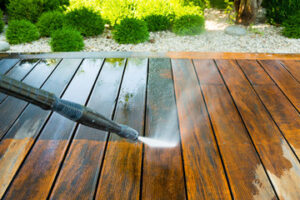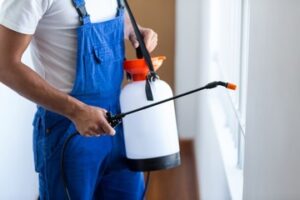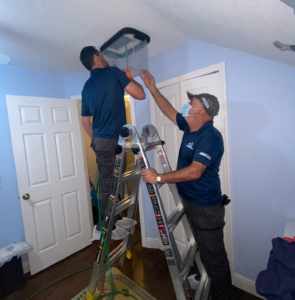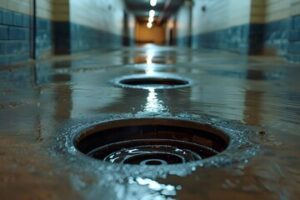Modesto CA SEO is an expansive subject that encompasses a range of knowledge and processes. It’s also a constantly evolving field, but there are some core best practices that should always be followed.

For example, avoid using hacks. Those tactics will only hurt your search engine rankings in the long run.
Keywords are the foundation of any search engine optimization strategy. They are words or phrases that match a user’s search query, and the more closely they align with your website’s content, the higher the likelihood of your webpage appearing on a Search Engine Results Page (SERP). However, finding the right keywords requires research and often fine-tuning for clarity, accuracy, and common use.
Performing keyword research is essential for any business with a website, as it allows you to understand the needs of your audience and the content they want. It also helps you identify opportunities to rank for specific keywords. This will help you attract qualified traffic to your website and increase conversion rates.
A good keyword is a term that has a high search volume, low difficulty, and relevance to your brand. It must also be relevant to your long-term marketing goals and meet the needs of your target audience. Keywords are a crucial component of SEO and should be considered when creating new content, optimizing existing content, and planning for the future.
Singular keywords are often too broad and require a large amount of competition. For example, trying to rank for the term “clothes” is challenging as it can mean different things. A customer searching for “clothes” may be looking for a retail store, an online retailer, or even a fashion blog.
Another important factor to consider when choosing keywords is the intent behind the search. There are four commonly-recognized intents: informational, navigational, commercial, and transactional. Using this knowledge to inform your keyword research can help you create content that is more relevant to the needs of your audience and improve your search engine rankings.
In addition to researching keywords, it’s also a good idea to check out what your competitors are doing and analyze the content they have on their websites. This will give you a better understanding of their audiences and their pain points. It can also help you figure out what content to prioritize based on its potential for traffic. This is especially useful for businesses that offer seasonal products or services, such as Christmas decorations or winter gear.
On-page optimization
The on-page optimization of a website is the process of optimizing individual web pages to make them more visible and attractive to search engines. It involves including keywords that your target audience searches for in page content, meta tags, headings, and URLs. It also includes internal linking and ensuring that your website loads quickly. It is a key aspect of SEO because it increases the likelihood of a visitor clicking on your search result, resulting in higher visibility and traffic.
The most important aspects of on-page optimization are title tags and meta descriptions. These are the most common elements of a webpage and determine what is displayed in search results. They should be a short summary of the page content that is relevant to the search query and encourages visitors to click on your site. They should also include keywords, as Google uses these to determine relevance and context.
Another on-page optimization technique is analyzing user behavior and implementing a user-friendly design. This improves the experience of visitors and decreases bounce rates, which can negatively affect your search engine rankings. It also helps you rank for specific queries based on a person’s intent rather than their exact keywords.
Keyword research is also an essential on-page optimization technique. Using keywords in your title, metadata, and headers can help search engines understand what the page is about and rank it accordingly. In addition, it can help you create meaningful content that is more likely to answer users’ questions and provide relevant answers.
Another way to improve on-page optimization is to optimize your URLs. Using your primary keyword in the URL will help search engines and users understand what the page is about. It is also helpful to use descriptive words in the URL, as opposed to numbers and characters.
On-page optimization is a crucial part of any marketing strategy, and it’s not as difficult as some people might think. Fortunately, many modern content management systems (CMSs) have built-in tools to help you optimize your site’s content and pages for search engines. If you’re building a new website, ask your developers to build it with a CMS that allows you to implement these features.
Link building
Link building is an important part of SEO that helps improve your website’s visibility. When you have many high-quality backlinks, search engines view your content as more authoritative and relevant. This can help you rank higher in the search results, which can lead to more traffic and business. However, it’s important to remember that not all links are equal. Some are “nofollow” links, which don’t pass any value to search engines. Others are dofollow links, which can give you a big boost in the rankings. It’s also important to monitor your website’s conversion rate, which measures the percentage of visitors who take a desired action, such as making a purchase or filling out a form.
Another way to track your progress is by using tools such as Market Brew, which can provide you with a more comprehensive view of your competitors’ links. This can help you figure out what types of content are most popular in your industry and determine how you should structure your own links.
Creating quality content that provides valuable information to your readers can go a long way toward establishing you as an authority in your field. When reputable sources link to your content, Google and your audience will start to see you as the go-to expert in your niche.
However, generating quality content takes time and effort. It’s also important to avoid overdoing the promotion of your content. Trying to artificially increase your visibility will hurt your credibility and may result in a penalty from Google.
When you build links, make sure to focus on getting do-follow links. These links will pass value to your website, which can help you rank higher in the search engine results pages (SERPs). You should also avoid submitting your site to directories, as this practice is not considered ethical.
When you have a solid strategy in place, it’s crucial to monitor your performance over time. This can help you identify areas for improvement and ensure that your efforts are paying off. In addition, it’s essential to use your data to make informed decisions about the direction of your SEO campaign.
Content creation
In a digital marketplace where people are bombarded with ads across multiple channels, content creation is the most effective way to establish trust and authority. This is why it’s so important to include a mix of different types of content in your SEO strategy, including visual, informative and engaging content.
Aside from keyword research, content creation is the most essential aspect of SEO. Without great content, your website won’t rank high in search results and will miss out on potential traffic. There are several different types of content you can create to improve your SEO, including blogging, landing pages, social media posts, and infographics. Each type of content is designed to capture a different audience and help your business reach its goals.
The first step in creating good SEO content is conducting keyword research. This will give you a clear understanding of what your target audience is searching for, which can inform the content you create. It’s also helpful to find out the competition for these keywords, as this will help you determine whether or not your content is likely to rank well for them.
Once you’ve identified the keywords that are most relevant to your business, it’s time to start writing! Whether you’re hiring an agency or doing it yourself, it’s important to write content that is informative and unique. It’s also critical to follow the rules of online writing, such as using a proper title, description and image. Using an image that is labelled correctly can improve your SEO, as it will allow search engines to read the description and display it in search results.
It’s also important to keep up with the latest trends in SEO. This will ensure that your content is up-to-date and relevant to your audience. Lastly, don’t forget to promote your content! Including the right links and using a proper permalink structure will help your website rank higher in search results. Keeping up with these best practices will ensure that your content is optimized for SEO and drives new visitors to your site. Ultimately, this will result in more leads and sales for your business.








